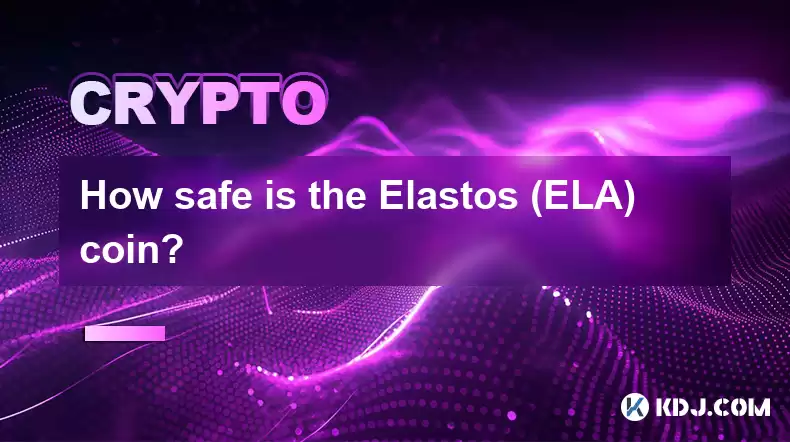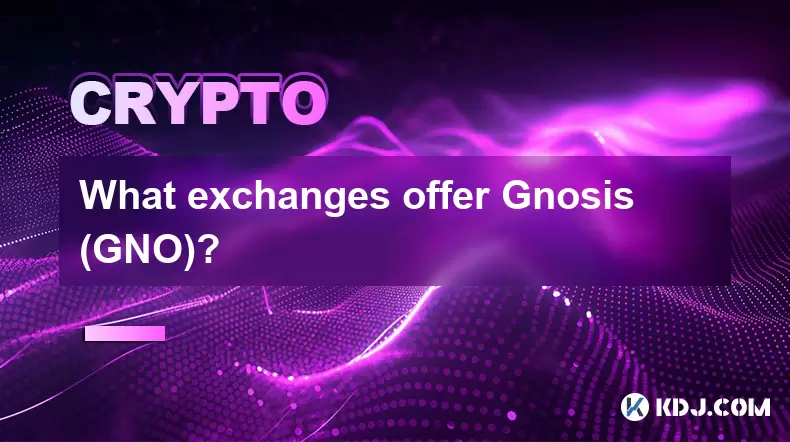-
 Bitcoin
Bitcoin $118600
-2.59% -
 Ethereum
Ethereum $4282
-0.42% -
 XRP
XRP $3.129
-4.21% -
 Tether USDt
Tether USDt $0.0000
0.01% -
 BNB
BNB $805.4
-1.80% -
 Solana
Solana $174.3
-5.77% -
 USDC
USDC $0.9998
-0.01% -
 Dogecoin
Dogecoin $0.2230
-6.33% -
 TRON
TRON $0.3466
1.70% -
 Cardano
Cardano $0.7745
-5.73% -
 Chainlink
Chainlink $21.37
-3.53% -
 Hyperliquid
Hyperliquid $42.93
-7.25% -
 Stellar
Stellar $0.4324
-4.94% -
 Sui
Sui $3.660
-7.17% -
 Bitcoin Cash
Bitcoin Cash $591.6
2.72% -
 Hedera
Hedera $0.2467
-7.04% -
 Ethena USDe
Ethena USDe $1.001
0.00% -
 Avalanche
Avalanche $22.92
-6.14% -
 Litecoin
Litecoin $118.8
-3.79% -
 Toncoin
Toncoin $3.378
-0.46% -
 UNUS SED LEO
UNUS SED LEO $9.011
-1.15% -
 Shiba Inu
Shiba Inu $0.00001294
-5.81% -
 Uniswap
Uniswap $11.24
0.53% -
 Polkadot
Polkadot $3.870
-6.16% -
 Cronos
Cronos $0.1662
-1.68% -
 Dai
Dai $1.000
0.02% -
 Ethena
Ethena $0.7915
-5.62% -
 Bitget Token
Bitget Token $4.414
-1.65% -
 Monero
Monero $259.3
-3.85% -
 Pepe
Pepe $0.00001120
-8.29%
How safe is the Elastos (ELA) coin?
Elastos' robust security measures, such as PoW consensus, secure wallets, and smart contract protection, ensure the integrity of the network and protect user funds.
Jan 01, 2025 at 05:09 am

Key Points:
- Security Features of the Elastos Network
- Cryptocurrency Exchange Support
- On-Chain Analysis and Transaction Transparency
- Elastos Ecosystem and Community
- Risk Factors to Consider
Security Features of the Elastos Network:
- Proof-of-Work Consensus: ELA operates on a secure Proof-of-Work (PoW) consensus mechanism, ensuring network stability and transaction validation. This mechanism requires miners to solve complex mathematical problems to earn block rewards, making it computationally expensive for malicious actors to manipulate the network.
- Wallet Security: Elastos offers a range of secure hardware and software wallets for storing ELA tokens. These wallets employ robust encryption standards and multi-factor authentication mechanisms to protect user funds from unauthorized access.
- Smart Contract Security: Elastos supports the development and deployment of smart contracts using the Elastos Developer Platform (EDP). The EDP incorporates various security measures, such as code verification, static analysis, and sandbox execution, to minimize smart contract vulnerabilities and prevent potential exploits.
Cryptocurrency Exchange Support:
- ELA is listed on several reputable cryptocurrency exchanges, including Binance, Huobi, and OKX. These exchanges implement strict security protocols, KYC/AML procedures, and cold storage solutions to protect user assets and prevent fraud.
- By being present on established exchanges, ELA gains credibility and accessibility for a broader range of investors and traders.
On-Chain Analysis and Transaction Transparency:
- The Elastos blockchain is fully transparent, allowing users to track transactions on block explorers such as Elastos Scan. This enables independent verification of transaction history, balance updates, and wallet activity.
- Advanced analytical tools can be used to monitor network metrics, transaction patterns, and the distribution of ELA tokens. This provides investors with insights into market conditions, trading volumes, and the overall health of the network.
Elastos Ecosystem and Community:
- Elastos has a vibrant and supportive community, contributing to the project's development, adoption, and security.
- Active community forums, social media platforms, and developer resources provide users with access to information, updates, and technical support.
- The strong community engagement helps drive innovation, identify vulnerabilities, and promotes the continued growth and security of the Elastos ecosystem.
Risk Factors to Consider:
- Price Volatility: Cryptocurrency markets are inherently volatile, and ELA prices can fluctuate significantly depending on market conditions and investor sentiment.
- Cybersecurity Threats: Cryptocurrency networks are potential targets for hackers and malicious actors seeking to exploit vulnerabilities and steal funds. Regular software updates and security best practices are essential to mitigate these risks.
- Smart Contract Risks: While smart contracts offer flexibility and automation, they can be susceptible to vulnerabilities and exploits. It is crucial to thoroughly review and audit smart contracts before deployment to ensure they meet security standards.
FAQs:
Q: Is ELA a secure cryptocurrency to invest in?
A: Elastos implements various security measures, including PoW consensus, secure wallets, smart contract security, and cryptocurrency exchange support. However, all cryptocurrency investments carry inherent risks, including price volatility and cybersecurity threats.
Q: Which exchanges are trustworthy to trade ELA?
A: Binance, Huobi, and OKX are well-established cryptocurrency exchanges with a strong track record of security and customer support.
Q: How can I verify transaction details for ELA?
A: Block explorers like Elastos Scan allow users to track transactions and view blockchain data publicly.
Q: Is it safe to store ELA in a software wallet?
A: Software wallets can provide convenient storage for ELA, but they should be reputable and secure. Enable two-factor authentication and store private keys offline for enhanced protection.
Q: What measures are in place to prevent smart contract vulnerabilities?
A: Elastos employs code verification, static analysis, and sandbox execution mechanisms to identify and mitigate smart contract vulnerabilities. Regular audits and community contributions also help improve security.
Disclaimer:info@kdj.com
The information provided is not trading advice. kdj.com does not assume any responsibility for any investments made based on the information provided in this article. Cryptocurrencies are highly volatile and it is highly recommended that you invest with caution after thorough research!
If you believe that the content used on this website infringes your copyright, please contact us immediately (info@kdj.com) and we will delete it promptly.
- Dogecoin, Presale, Surge: Riding the Meme Coin Wave
- 2025-08-12 11:10:12
- Dogecoin, Tron, and the ROI Reality Check: What's a Crypto Investor to Do?
- 2025-08-12 11:15:12
- Ethereum Layer-2 Scaling Competition Heats Up as ETH Breaks $4K
- 2025-08-12 10:30:12
- China Regulation, Stablecoins, and BNB Presale: Navigating the Crypto Landscape
- 2025-08-12 11:30:12
- Meme Coins, Investment, and Token Burns: What's Hot in 2025?
- 2025-08-12 10:30:12
- China's National Security Alarm Bells Ring Over Worldcoin's Iris Scans
- 2025-08-12 11:35:12
Related knowledge

How to purchase Aragon (ANT)?
Aug 09,2025 at 11:56pm
Understanding Aragon (ANT) and Its PurposeAragon (ANT) is a decentralized governance token that powers the Aragon Network, a platform built on the Eth...

Where to trade Band Protocol (BAND)?
Aug 10,2025 at 11:36pm
Understanding the Role of Private Keys in Cryptocurrency WalletsIn the world of cryptocurrency, a private key is one of the most critical components o...

What is the most secure way to buy Ocean Protocol (OCEAN)?
Aug 10,2025 at 01:01pm
Understanding Ocean Protocol (OCEAN) and Its EcosystemOcean Protocol (OCEAN) is a decentralized data exchange platform built on blockchain technology,...

Where can I buy UMA (UMA)?
Aug 07,2025 at 06:42pm
Understanding UMA and Its Role in Decentralized FinanceUMA (Universal Market Access) is an Ethereum-based decentralized finance (DeFi) protocol design...

What exchanges offer Gnosis (GNO)?
Aug 12,2025 at 12:42pm
Overview of Gnosis (GNO) and Its Role in the Crypto EcosystemGnosis (GNO) is a decentralized prediction market platform built on the Ethereum blockcha...

How to buy Storj (STORJ) tokens?
Aug 09,2025 at 07:28am
Understanding Storj (STORJ) and Its Role in Decentralized StorageStorj is a decentralized cloud storage platform that leverages blockchain technology ...

How to purchase Aragon (ANT)?
Aug 09,2025 at 11:56pm
Understanding Aragon (ANT) and Its PurposeAragon (ANT) is a decentralized governance token that powers the Aragon Network, a platform built on the Eth...

Where to trade Band Protocol (BAND)?
Aug 10,2025 at 11:36pm
Understanding the Role of Private Keys in Cryptocurrency WalletsIn the world of cryptocurrency, a private key is one of the most critical components o...

What is the most secure way to buy Ocean Protocol (OCEAN)?
Aug 10,2025 at 01:01pm
Understanding Ocean Protocol (OCEAN) and Its EcosystemOcean Protocol (OCEAN) is a decentralized data exchange platform built on blockchain technology,...

Where can I buy UMA (UMA)?
Aug 07,2025 at 06:42pm
Understanding UMA and Its Role in Decentralized FinanceUMA (Universal Market Access) is an Ethereum-based decentralized finance (DeFi) protocol design...

What exchanges offer Gnosis (GNO)?
Aug 12,2025 at 12:42pm
Overview of Gnosis (GNO) and Its Role in the Crypto EcosystemGnosis (GNO) is a decentralized prediction market platform built on the Ethereum blockcha...

How to buy Storj (STORJ) tokens?
Aug 09,2025 at 07:28am
Understanding Storj (STORJ) and Its Role in Decentralized StorageStorj is a decentralized cloud storage platform that leverages blockchain technology ...
See all articles

























































































